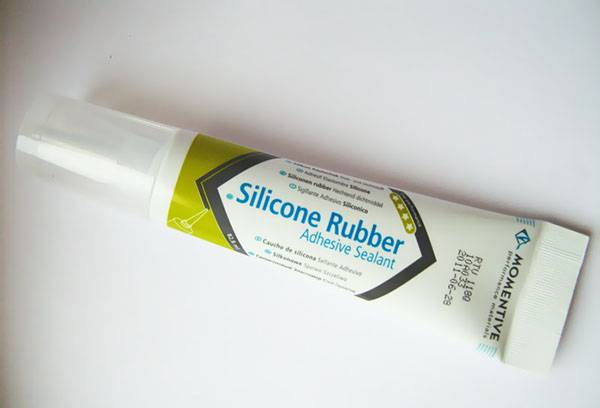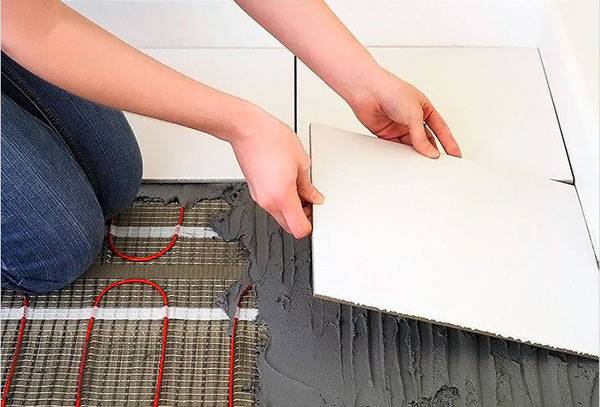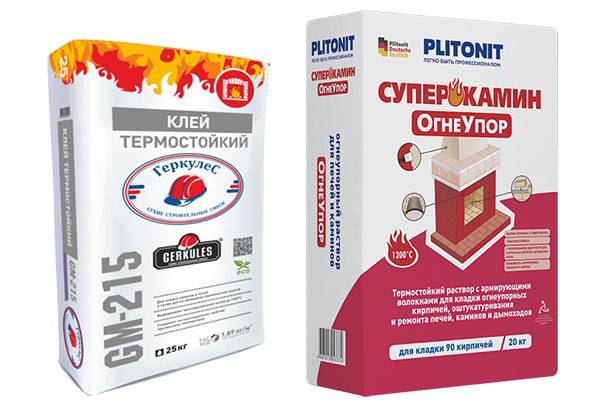Types and features of heat-resistant glue
Content:
Glue is considered to be the most common and convenient form of bonding materials with each other. Previously, adhesive compounds contained mainly natural components, but today manufacturers prefer synthetic polymers. Heat-resistant adhesive is one of the representatives of such compositions and is characterized by stable resistance to temperature differences. Using this substance, you can glue glass and metal, ceramics and brick, and the properties of the adhesive with strong heating and rapid cooling will remain unchanged. High-temperature glue is used in the construction of stoves and fireplace portals, ceramic tile lining of heating surfaces, laying of a warm floor, as well as in the repair of metal and glass products.
Characteristics and properties of heat-resistant adhesive
Modern heat-resistant glue consists of several substances, each of which has a special purpose:
- a mixture of sand and cement;
- plasticizers (necessary in order to ensure high plasticity of the composition and to avoid cracking of the connecting layer);
- synthetic additives that improve the heat resistance of the composition.
Often, manufacturers of heat-resistant glue supplement its composition with refractory clay, which ensures a reliable connection of materials and increases the resistance to adhesion to temperature extremes.
Solid adhesive used in "hot" conditions should have the following properties:
- ability to linear expansion;
- wear resistance and moisture resistance;
- minimum temperature of stability not less than 300 degrees;
- resistance not only to high, but also to low temperatures;
- environmental Safety;
- universality - the product should be equally well suited for indoor and outdoor use;
- good heat transfer.
Important!
If high-temperature glue is used to join plastic surfaces, it is necessary to take into account the fact that the plastic must also be heat-resistant.
What surfaces is hot glue suitable for?
Heat-resistant adhesive is suitable for joining a wide variety of materials. They can glue metal parts and bricks, wood and concrete, glass and ceramics. Regardless of the type of surfaces to be bonded, the joint will be strong and durable. The main thing is to thoroughly clean the surfaces of the elements to be glued.
- For brick
More recently, for the construction of a brick stove or fireplace portal, refractory clay or cement was used as a connecting mixture by the craftsmen. Today, when carrying out furnace work, high-temperature glue is used, which is able to withstand up to + 1000 ° C. This is a very important property, since in the furnace mine the temperature reaches enormous indicators.
Important!
When choosing glue for the construction of a stove or fireplace, the toxicity of the composition must be taken into account. The lower this indicator, the less harmful substances will enter the environment when the furnace is heated.
Usually in the composition of heat-resistant glue there is a reinforcing component, for example fireclay fiber. Best of all, such an adhesive composition is combined with fireclay bricks, from which, as a rule, the furnace mines are laid out.
- For tiles
Experts advise using heat-resistant glue for facing stoves and fireplaces with ceramics, and for finishing underfloor heating. It is practical and convenient, has high thermal characteristics.
The composition of tile adhesives for high temperatures contains a mixture of sand and cement, as well as various synthetic additives that increase the stickiness and ductility of the composition. This is very important, since the elements of the furnace structure, expanding when heated, begin to narrow as they cool. If the adhesive for the tile does not have sufficient ductility, then after some time the furnace will become covered with cracks.
- For metal
There is a special adhesive composition for joining metal elements, called “heat-resistant cold welding”. The composition of this glue contains epoxy resins, metal additives, synthetic plasticizers. The product is available in the form of a liquid or a viscous substance similar to plasticine. If you need to glue two metal parts placed in the oven, or stick the handle to the pan, you need a heat-resistant adhesive for metal.
Popular brands of heat-resistant glue
Today, shelves in construction stores are filled with adhesive compounds. Each manufacturer claims that its glue is the most reliable. In order not to get confused in the variety of products, one must have an idea of the most popular high-temperature adhesives. Here are some of them.
- D-314. The glue produced by the Russian company "Diola" is intended for decorating stoves and fireplaces with ceramic tiles. The prepared mixture is flexible and form-resistant, thanks to which the tile does not slip and holds firmly on the lined surface. The composition withstands heating up to + 850 ° C, is ready for operation three days after the end of work.
- "Super fireplace." The heat-resistant composition with reinforcing fibers from the Russian manufacturer Plitonit allows gluing tiles from ceramic, granite, and natural stone to brick and concrete substrates subject to heat.
- Hercules GM-215. The adhesive composition is intended for the construction of fireplaces and stoves and is able to withstand heating up to + 1200С. In addition, it is excellent for finishing heating surfaces with low porous ceramic tiles or glazed tiles. Glue allows finishing work at temperatures from -10 ° С to + 35 ° С.
- "Moment Epoxylin." High-temperature glue is produced by the well-known company Henkel and is a two-component composition based on epoxy resin. This adhesive is used to join metal, ceramics, glass and other materials. After hardening, a layer so strong is formed that it can be drilled and polished.
Heat-resistant adhesive rightfully occupies a leading position among adhesive compositions. High adhesion, the ability to maintain their properties regardless of temperature changes, the strength and durability of the joints, plasticity - qualities that make this adhesive indispensable in construction and in everyday life.


